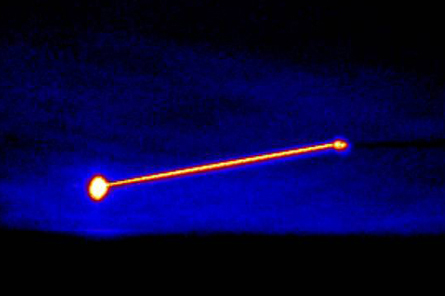It was a moment that signalled the dawn of a new age of photon weapons. A modified Boeing aircraft fired a high-energy laser at a speeding missile. The beam's intense heat forced the missile's internal structure to buckle, breaking into harmless fragments. True, the weapon represents merely a testbed, but surely a more viable operational system will soon follow?
Alas, that moment came not on 11 February, when the newly renamed Boeing Airborne Laser Testbed intercepted a short-range ballistic missile.
It actually came in 1984. That's when the Airborne Laser Laboratory - a modified Boeing KC-135 - intercepted a missile with a laser for the first time.
 |
|---|
© Missile Defense Agency |
Twenty-six years later, the intercept results unfortunately showed how little progress has been made despite an expenditure of $6 billion since 1996.
The agency's recent achievement confirms that under sanitary testing conditions the chemical oxygen iodine laser - with the word "chemical" presumably substituted for the more worrying term "chlorine" - can knock out a short-range ballistic missile.
But the Boeing laser testbed was supposed to be an operational system, not a testbed. It was reclassified last year by the Department of Defense.
That reclassification means a large fortune has been wasted on an impractical weapon, with billions more needed to design an operational system.
Source: Flight International



















